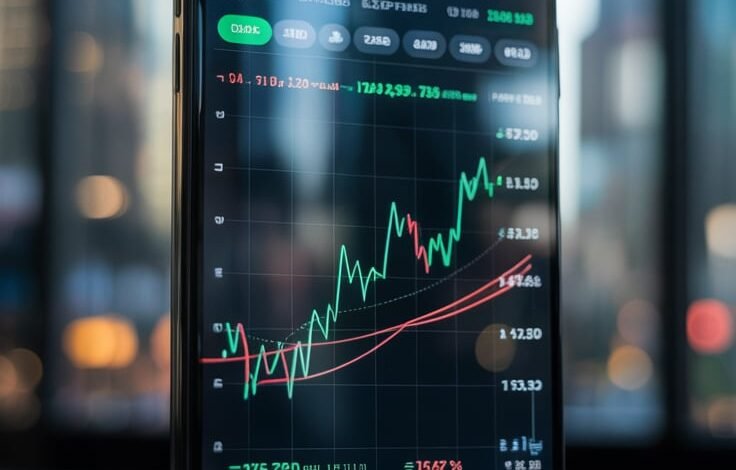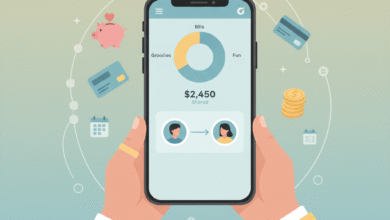
The Ultimate Guide to Forex Tracking for U.S. Traders
What Is Forex Tracking?
Forex Tracking inn order to know what forex tracking is, one must understand that it involves the collection and monitoring of real-time data about currency pairs, market dynamics, and economic events that shape exchange rates. It’s like one having a pulse on the body of the economy around the world. For Americans, that means keeping up with stuff like, say, how the dollar is holding up against the biggies (EUR/USD, USD/JPY), interest rates, and how the political landscape tends to fluctuate.
It isn’t just about viewing lovely price charts. Analyzing technical indicators and monitoring economic calendars while using tools to track market sentiment; whether a day trader in New York or a swing trader in California; will be able to take his time to track foreign exchange movements and benefit from it.
What the United States Traders Should Understand about Forex Tracking
The Forex market is open 24 hours at 5 days a week and is characterized by sessions that comb the major trading centers in the world: Tokyo, New York and London. Globalized as it is, this ensures that U.S. traders cannot escape market shifts when off-hours come into play. Here’s one of those ways why forex tracking changes everything:
- Making decisions: Real-time data tracking enables traders to recognize trends like a dollar making gain on account of a Federal Reserve policy change and react immediately.
- Risk management: Traders can observe volatility and events of economies as they can place stop-loss orders or modify positions to reduce losses.
- Opportunities identification: Forex tracking helps you to discover high-probability trade setups; like buying USD/CAD when there is a positive U.S. economic signal.
- Competitive advantage: Forex is highly competitive. Thus measuring tools endow U.S. traders insight as they provide the granules into the global market movements.
Essential Tools for Forex Tracking
For those who want to track forex in the best manner possible, U.S. traders need really good tools and thus have included these:
1. Trading platforms with real-time data
Popular platforms have been MT4 or MetaTrader 4, MT5 or MetaTrader 5, TradingView, among others. Their resource-rich capabilities-they give users many options of viewing currency pairs at a time, price alert settings, and analysis of historical data-in addition to real-time charts with technical indicators and customizable dashboards.
By making a selection of a trading platform subsidized by either the United States’ National Futures Association (NFA) or by its Commodity Futures Trading Commission (CFTC), U.S. traders are secured against fraud and scams that utopically plague many other platforms.
2. Economic Calendars
The U.S. non-farm payroll reports and Federal Reserve interest rate decisions are some of the most impactful economic events that result in high volatility of currency prices. Free economic calendars for listing near-future events, date of impact, effect expected, and actual data may be found from ForexFactory and Investing.com. These high-impact events could be ringing alarms in preparation.
3. News Aggregators
US-China trade stuff, inflation figures, and others tend to create violent reactions in markets quite spontaneously. In short, follow Bloomberg, Reuters, or if you have the guts, even the likes of X to keep abreast. Read up credible news sources about finance to avoid false information.
4. Mobile Apps
Equipped with real-time tracking, charting, and execution of trades, mobile applications like OANDA, TD Ameritrade’s thinkorswim, and Forex.com are a convenience for traveling traders. They provide relief for traders who use busy schedules in the U.S.
5. Sentiment Analysis Tools
Market sentiment will drive currency price s to great extent. The commitment of traders report (cot): CFTC provides an insight into how large traders are positioned concerning the market. Applications like Myfxbook also provide community based sentiment data.
Pro Strategies to Monitor Forex Markets Effectively
It has to be a well-structured way of tracking the foreign exchange market in order to be very effective. A step-by-step guide to be followed, specifically for U.S. traders, is given below:
Step 1. Choosing the Currency Pair
Let the focus be on the high liquidity and tighter spread major currency pairs along with the U.S. dollar – EUR/USD, USD/JPY, GBP/USD, etc. Monitor and set alerts for their price movements through your trading platform.
Step 2: Download Technical Indicators
Without technical analysis, the forex tracking would be incomplete. The main indicators are as follows:
- Moving Averages: To smooth price data to identify trends.
- Relative Strength Index (RSI): Identify overbought or oversold conditions.
- Bollinger Bands: Monitor volatilities and breakouts. Customize your charts to include the above-mentioned indicators and play with them a little bit until you find what suits your style of trading.
Step 3: Follow that Economic Calendar
Today check your economic calendar for news like U.S. GDP releases, unemployment reports, and Federal Open Market Committee (FOMC) meetings. The causes of price movements are highly expected thus require a trading plan around them.
Step 4: Get Alerts and Notifications
Put outside price alerts on your trading platform or mobile application to avoid missing major movements, for instance, with the USD/CAD pair set alert on important support resistance levels.
Step 5: Track Market Attitude
To determine market sentiment, use resources such as social media platforms or the COT report. For example, a significant short position in the euro by big traders may indicate a possible rally in the USD/EUR.
Step 6: Keep a Trading Journal
Typical Errors in Forex Tracking to Avoid
When following the forex market, even experienced traders can make mistakes. Here are some things to be aware of:
- Overloading Indicators: Analytical paralysis can result from using an excessive number of technical indicators. Limit yourself to those that work for your plan.
- Ignoring Risk Management: Excessive losses may arise from a failure to monitor volatility. Use stop-loss orders and appropriate position sizing at all times.
- Pursuing News Without Confirmation: Not all news sources can be trusted. Verify your sources to prevent responding to rumors.
- Ignoring Time Zones: U.S. traders need to take into consideration market sessions in other places, such as the opening of London, which can cause volatility.
Advice for American Traders on Forex Tracking
Keep these useful points in mind to achieve the most from your forex tracking efforts:
- Leverage technology: Keep an eye on the sleeping markets using an automation tool like trading bot or script.
- Maintain your discipline: Follow a schedule to review market figures and economic calendar.
- Constantly know: Since the foreign exchange market is always changing, stay with the latest equipment and strategy by following blogs, webinars or trading communities.
- Test your strategy: Use a demo account, to practice trekking and trading without risk of real money.
Why Forex Tracking Should Be a Top Priority for US Traders
Forex tracking exceeds just one tool for American traders; This is necessary. US dollar is a major player in international markets as it is the world’s main reserved currency. You can benefit from global events, Federal Reserve policies and opportunities fuel by American economic data by becoming experts in forest tracking. Additionally, you can trade with confidence knowing that if you have proper equipment and discipline then you are taking data-operated decisions.
Getting Started with Forex Tracking
Ready to dive into forex tracking? Here’s a quick action plan:
- Sign up for a regulated trading platform like Interactive Brokers or Forex.com.
- Download a mobile app for on-the-go tracking.
- Bookmark an economic calendar and check it daily.
- Start with major currency pairs and practice using technical indicators.
- Join a U.S.-based trading community to share insights and learn from others.




